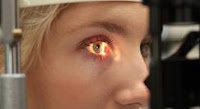 Diabetes Cure
Diabetes Cure Diabetes is a blood sugar disease a disease in which the body either does not produce or does not property utilize insulin. Diabetes or Diabetes Mellitus is a condition wherein a person’s body is unable to regulate the glucose level in blood. These glucose levels are controlled by a hormone called insulin. The disturbances in the level of insulin lead to increase in glucose levels in blood, resulting in Diabetes mellitus.
Symptoms of Diabetes
- weight loss
- frequent urination
- deep breathing
- vomiting
- itchy skin
- sores that take time to heal
- abdominal pain
- blurred vision
- numbness of hands or feet
- frequent skin, gum or vaginal yeast infections
Diabetes cannot be cured completely, but can be effectively controlled. People with diabetes can lead a healthy life if, their blood glucose level is under control. The decrease in life span of a diabetic is restored to normal by maintaining good blood glucose control (90-130 mg/dl at fasting and with less than 180 mg/dl 2hrs after meals).
Sometimes, patients may not need any tablet/insulin or, even diet control to keep their blood glucose in control. This period is called honeymoon phase (in Type-1 diabetes). The duration may vary from a few days to over six months. Some patients mistake this for cure of diabetes.
Cardiovascular disease accounts for 70-75% deaths in diabetic people with acute myocardial infarction being responsible for 30% mishaps. Diabetes typically doubles heart attack risk in men and triples in women.
Heart Disease
Most people are likely to react like this. But you must realize that while you may not have a heart problem now, your lifestyle and habits may increase your risk of a heart attack. Indians are genetically prone to heart ailments and according to World Health Organization (WHO) reports, by the year 2010, Indians will constitute about 60% of the total heart patients in the world. But the good news is that the power to manage heart disease is in your hands.
Physiologically and nutritionally pregnancy is a highly demanding period. The mother’s diet and health during pregnancy has great influence on the foetus. Normalization of blood glucose levels during pregnancy is extremely important for women who have pre existing diabetes (or) who develop Gestational Diabetes. Medical Nutrition Therapy (MNT) is important not only to meet the increased nutrient needs of the mother and the developing foetus, but also to assist in optimizing blood glucose levels.Increased demands of nutrients occur mainly in the third trimester as it is the period when the foetus achieves maximum growth.
· Adequate calories and at least 60 g protein is necessary in the diet to be followed during pregnancy.
· This has to be adequately supported with vitamin/mineral supplements (especially iron, folic acid, and calcium).
· The diet must include complex carbohydrates, low fat protein and low fat dairy products.
· Small frequent feeds throughout the day, (3 meals and 3-4 snacks) are better during Pregnancy.
· Regularity in meal times and insulin regimen should be stressed.
· Avoid smoking and alcohol during pregnancy.
· Monitoring blood glucose, HbA1c, lipids, Blood pressure & integrate insulin with appropriate diet plan.
· Weight gain should be monitored. The weight gain pattern would be similar to that of pregnant women without diabetes.
· A regular daily walking regimen of 30 min/day should be followed.
·
Natural Diabetes Cure
Smoking
Lack of exercise
Obesity
Stress
Diabetes
Cholestero
High blood pressure
1. Diet: The single most important change any diabetic or person at risk can make is to improve their diet. Diabetic diet will reduce blood sugar, reduce insulin levels, and reduce the need for medications
2. Exercise: Exercise is of great benefit to diabetics and can reduce the risk of developing type 2 diabetes. Regular physical activity helps reduce weight, lower blood sugar, improve insulin sensitivity, strengthen the immune system, improve circulation, lower blood pressure, cholesterol and reduce risk of heart disease.
3. Nutritional Supplements: supplements are very effective in helping to lower blood sugar and insulin levels, reduce cholesterol levels, reduce triglyceride levels, reduce blood pressure, improve energy, and reduce the risk of heart disease.
 MEDICAL TREATMENTS
MEDICAL TREATMENTS
Mainstream medical doctors often treat peripheral neuropathy with pharmaceutical drugs, but they all have serious side effects, including dizziness, sleepiness, dry mouth, blurred vision, weight gain, nausea, headache and in serious cases, allergic reaction and confusion, among others. People with diabetes must control blood sugar levels to help slow further peripheral neuropathy development.
People who suspect vitamin deficiencies should see a holistic physician for blood level tests and to help them establish a healthy diet and vitamin protocol. They must also avoid or greatly reduce alcohol consumption. Those having chemotherapy should alert the supervising doctor immediately if numbness or tingling starts in their feet or hands. The doctor may be able to alter the drugs somewhat to keep the neuropathy from escalating.
 |
| www.mvdiabetes.com |
·

























